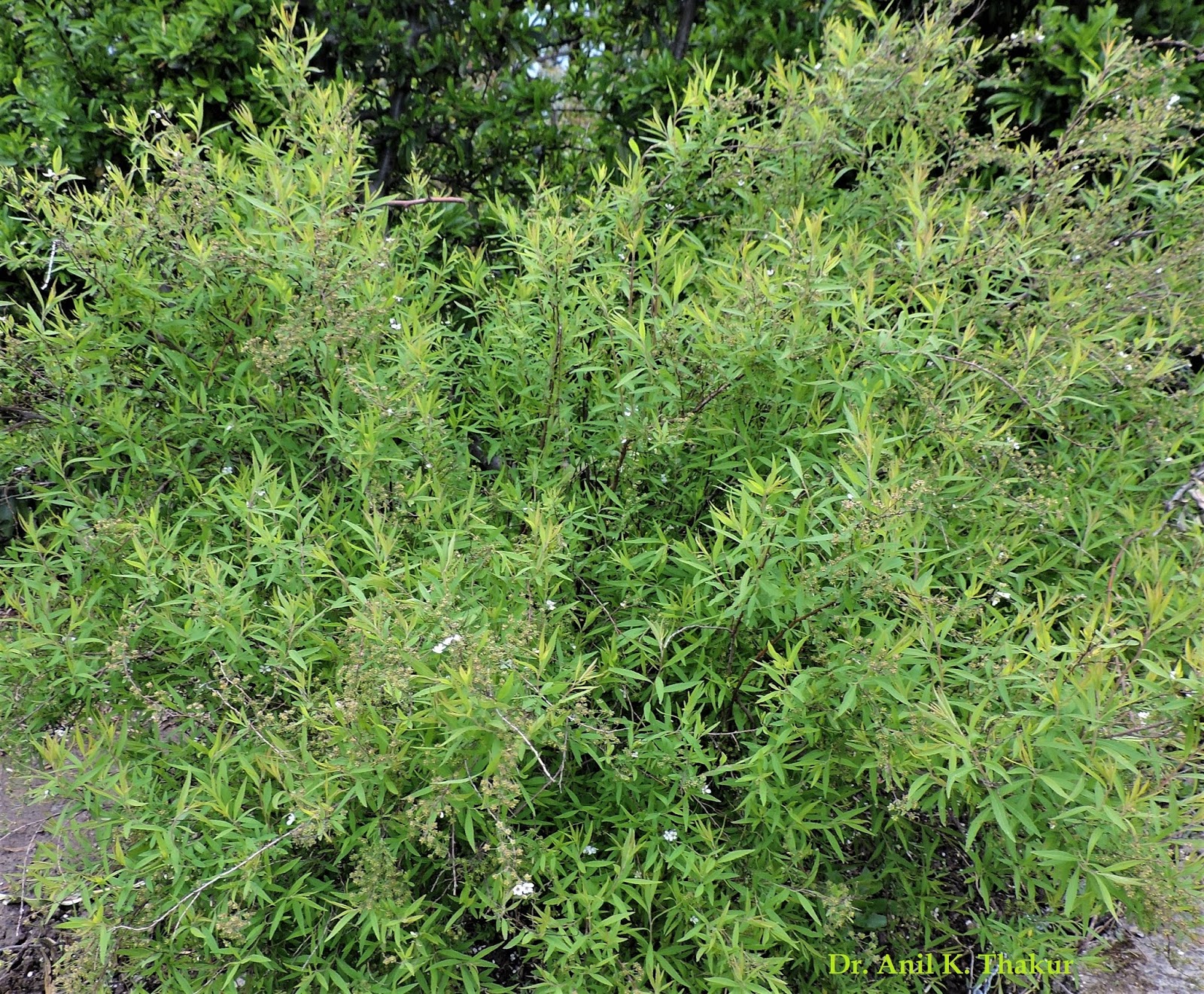Monday 30 April 2018
HUMAN-WILDLIFE CONFLICTS
The conflict between humans
and animals is one of the main threats to the continued survival of many
species in different parts of the world. It is also a significant threat to
local human populations. World Wide Fund for Nature (WWF) has defined
human-wildlife conflict (HWC) as "any interaction between humans and
wildlife that results in negative impacts on human, social, economic or
cultural life, on the conservation of wildlife populations, or on the
environment."
According to the World Conservation Union (World Parks Congress, Montreal, 2003),
a conflict occurs when wildlife's requirements overlap with those of human
populations, creating costs to residents and as well as wild animals. The
direct human contact with wildlife occurs in both urban and rural areas.
However, it is more common inside and around the protected areas, where
wildlife population density is higher and where animals often stray into adjacent
cultivated fields or grazing areas. The human-wildlife conflicts (HWC) pose a
serious obstacle to wildlife conservation and the livelihoods of people
worldwide. The HWCs have become more prevalent with increase in human
population, expansion of developmental activities and global climate changes.
These and other environmental factors have brought people and wildlife in
direct competition for a limited shrinking resource base.
Types
of Conflicts
The human-animal conflict
can be broadly classified into four types :
(i) Competition for
space
(ii) Crop raiding
and destruction by wild animals
(iii) Attacking of
the livestock
(iv) Injury or death
of humans.
With the increasing human
population and adoption of conservation laws, the competition for space has
increased and overlapped over the years. The wildlife attacks by tigers,
leopards, lions and bears on people and damage to the property can be often
read in newspapers and seen in visual media. The crop raiding is another issue
since the agriculture has been carried out by clearing off lands. The
nutritious food is easily available to the wild animals in the form of crops.
The livestock becomes victim in the absence of food or direct contact with each
others. The most severe conflicts arise when the victims are humans themselves
leading to even killings of those wild animals.
Wildlife
Aspects
The HWCs have far reaching
environmental impacts. The species most exposed to conflicts are also more
prone to extinction. HWC has become a critical threat to the survival of many globally
endangered species. The large and rare mammals such as the Sumatran tiger (Panthera tigris sumatrae), the Asian
lion (Panthera leo persica), the snow
leopard (Uncia uncia) and the Red
colobus monkey (Procolocus kirkii)
are highly threatened these days. The numerous cases from countries all over
the world demonstrate the severity of human-wildlife conflicts. Humans usually
resort to intentional or retaliatory shooting or poisoning of wildlife in cases
of conflicts. Such human-induced mortality affects the population viability of
some of the most endangered species. This can have broader environmental
impacts on ecosystem equilibrium and biodiversity preservation.
Human
Aspects
The HWCs also countermine
the welfare, health and safety of humans. The humans have to face huge economic
and social costs due to HWCs. The encounters with animals, exposure to zoonotic
diseases and physical injury by large animals require financial resources for
medical treatments. The human deaths caused by large animals even shatter the
affected families. The wild animals stray into the inhabited areas and destroy
the agricultural crops, orchards and other human installations leading to
economic losses. The HWCs also have some negative social impacts like
additional labour costs, fear, restriction of travel and loss of pets.
Reasons
for Conflicts
Only 13 per cent of earth's
surface belongs to the global network of protected areas according to the World
Database on Protected Areas (2012). These areas are the last resort for many
large and threatened mammals. The protected areas are mostly surrounded by
human population. Due to unavailability of sufficient food, the animals come
out of these areas and a conflict situation arises. Feeding the wild animals is
another reason for the development of conflict situations. When people feed
them, they tend to perceive humans as a source of food and become comfortable
with humans. They do not treat humans as a threat and become dangerous over the
time. The garbage heaps also contribute to the conflicts. The garbage in urban
and rural areas attracts scavengers, like dogs and pigs, which are easy prey
for leopards. The livestock is an easy source of food for large mammals like
leopards as they do not have to go out and waste energy and time in hunting.
The wildlife studies have shown that old, injured or displaced animals usually
come into human territory in search of food and are the main reasons for HWCs.
The displaced and translocated animals become more aggressive and often attack
humans.
Indian
Scenario
In India, densely populated
human landscapes and wildlife habitats often overlap. The limited space and
resources adversely affect both humans and wildlife. On an average, nearly 400 humans
are killed annually by elephants while about 100 elephants are killed in
retaliation. Various studies have estimated that in India, 50,000 human deaths
occur every year due to human-snakes conflicts. About 1,000 people were
reportedly killed by tigers every year in India during the early 1900s. Tigers
killed 129 people in the Sundarbans mangrove forest from 1969-71. Leopards
attacked and killed 170 humans in India during 1982-1989. Nearly 239 people
were killed by them in Uttarakhand alone during 2000-2007. There is general
reverence towards plants and animals in some Indian regions and religions, where
people have become tolerant and do not persecute the wild animals. The
man-monkey conflict is one such example. Hindus do not kill monkeys due to
certain religious beliefs. Three Indian species, the Rhesus macaque (Macaca
mulatta), the Bonnet macaque (Macaca radiata) and the Hanuman langur
have become urbanized today due to this reason or some additional contributing
factors. The monkeys have developed less fear of humans and sometimes they become
aggressive towards humans especially the children and ladies. In H.P., they are
now treated as vermins. In the Kibber Wildlife Sanctuary (Himachal Pradesh),
18% of the total livestock holdings were killed by carnivorous snow leopard and
Tibetan wolf in 1995. The villagers had not resorted to killing the snow
leopard, but retaliatory action was performed against the Tibetan wolf. The
incidents of poisoning of peacocks and other birds have been reported
frequently in Tamil Nadu. The farmers spread poison in the agricultural fields
to prevent birds from attacking the crop, even though killing of national bird
is prohibited under Schedule 1 of the Wildlife Protection Act. The purple
moorhen bird, which was not earlier found in the area, has been reported to
damage the pokkali (an organic rice variety) crop in Kerala to the tune of 40%.
This has made the farmers to incur heavy economic losses and posing a threat to
crop cultivation. The Asian lion (Panthera
leo persica) and leopard (Panthera pardus) use the extensive
plantations of sugarcane and mango to find shelter and water in the proximity
of Gir National Park and Sanctuary in Gujarat. They hunt on buffaloes, cows,
pigs and dogs and also attack on farmers and labourers. The Bhadra Tiger
Reserve in Karnataka hosts a large number of animals. It is surrounded by villages
inhabited by nearly 3000 people. The tigers and leopards frequently resort to
depredation and cause annual economic losses to the tune of 16% of the annual
household income and 12% of the total family livestock holdings. The damage by
elephants to the crops accounts for an average loss of 14% of the total annual
production. About 107, 770 people (in 117 villages) live around Sariska Tiger
Reserve in Rajasthan. The wild herbivores of this region like Nilgai (Boselaphus
tragocamelus) and wild boars (Sus scrofa) raid the crops and causes
economic losses to the farmers to the tune of 50% annually. The sambar (Cervus
unicolor), chital (Axis axis), common langur (Presbitys entellus),
rhesus monkey (Macaca mulatta) and parakeets (Psittacula kremeri) also
account for some crop losses. Tigers and leopards frequently attack the
livestock.
Management
The environmental, human
health and safety, economic and social impacts of human-wildlife conflicts
point that governments, wildlife managers, scientists and local communities
should adopt measures to resolve the HWCs
in the interest of humans and ecological equilibrium. A shift in the
understanding of stakeholders is urgently needed to come out of the conflict situation.
Only 4·87% area in India is under protected area network according to National Wildlife
Database Cell, Wildlife Institute of India (2014). This needs to be increased
if we expect our wildlife to be confined to only to the forests. The urban and
rural areas are required to be kept clean to avoid human-animal conflicts. The
villages and households in high risk areas are required to be educated on
preventing and mitigating conflicts. A monitoring, live warning and information
sharing system need to be established on such conflicts. Every effort should be
made to promote co-existence between the wildlife in their natural habitats to
prevent any negative interactions. The large carnivores look
for alternatives prey like
livestock or humans only in the absence of their natural preys. Jammu and
Kashmir government has involved the villagers in conflict mitigation in the
state. The wildlife department has identified conflict zones and selected five
youths from each zone to act as interface between people and the forest
department. This has helped in easing tension and ensuring of people, property
and the animals.
Further Reading
Thakur, Anil K. and Bassi, Susheel K. (2016). Environment Science. D. Dinesh & Co., Jalandhar (Punjab), 2016.
Sunday 15 April 2018
MY BOOKS ON BOTANY
First Edition August 2021
First Edition September 2020
First Edition August 2020

First Edition in 2018
First Edition in 2019
First Edition in 2016
First Edition in 2017
First Edition in 2019
First Edition in 2017
First Edition in 2018
First Edition in 2019
First Edition in 2017
First Edition in 2017
First Edition in 2018
First Edition in 2015
First Edition in 2015
First Edition in 2016
First Edition in 2016
First Edition in 2015
First Edition in 2015
First Edition in 2014
First Edition in 2007
Subscribe to:
Posts (Atom)


























































